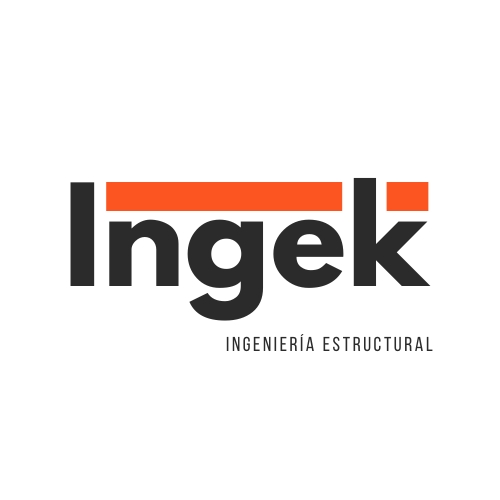What are seismic bracings?
- Ingek Ingeniería Civil

- Sep 9, 2024
- 3 min read
Definition and advantages of building with conventional vertical seismic bracings.
Vertical seismic bracings are structural elements designed to increase the strength and rigidity of buildings and other constructions against seismic events or other lateral loads such as wind, lateral pressures, etc. These systems work by absorbing and dissipating the energy generated by an earthquake, thus avoiding serious structural damage and protecting people's lives.

Chevron or V-type seismic bracings. Location: Mallplaza Trébol, Talcahuano. Photography: Ingek
Types of Seismic Bracings
Bracings are fundamental structural elements to guarantee the stability and resistance of frames against lateral loads, such as seismic loads. These elements are capable of dissipating energy through successive hysteresis cycles. Due to the cyclical origin of the loads produced by an earthquake, these elements can be subject to compression buckling, creep failure, local effects, material fatigue, etc. Therefore, the structural design must consider all these phenomena.
There are various types of bracing, each with specific characteristics and applications:
Simple diagonal: It consists of a single diagonal element that connects two nodes of the frame. It must resist both tensile and compressive stresses.
Cross or X type: This is the most commonly used. It is made up of two diagonals that cross each other, increasing the rigidity of the frame and controlling lateral displacements. However, it can generate interference in spans and generate stress concentrations at the connection nodes.
Type K: Connected to the column at mid-height, it offers greater flexibility in the design of facades. It is not recommended in high-intensity seismic zones due to the risk of failure due to column buckling.
Chevron or V type: Composed of two diagonals forming a V, it increases the rigidity of the frame, but can generate large stresses in the beam where the diagonals connect. It is commonly used in structures with concentric bracing or when architectural requirements do not allow the placement of other types of bracing.
Simple eccentric diagonal: Similar to the simple diagonal, but with an eccentric connection to one of the frame members.

X-type seismic bracing. Location: Santiago International Airport. Photography: Ingek
The choice of bracing type will depend on factors such as the geometry of the structure, seismic threat, ductility demand, applied loads, and architectural restrictions, among others.
How do seismic bracings work?
During an earthquake, bracing works as follows:
Non-linear response: The response of the bracing to cyclic excitations has a marked non-linear character, with hysteresis loops that evolve with the number of load cycles.
Energy dissipation: The absorbed energy is dissipated in the form of heat through the deformations of the structural elements.
Reduction of displacements: Bracing limits the lateral displacements of the structural elements, preventing further damage.
Importance of seismic bracing
Seismic bracing is essential to ensure the safety of buildings in seismic zones. By increasing the strength and stiffness of structures, the risk of collapse is reduced and human lives are protected.
Factors to Consider When Selecting a Bracing System
Selecting the right bracing system will depend on a number of factors, including:
Type of structure: Steel, concrete, wood buildings, etc.
Height and shape of the structure: Low, high, regular, irregular buildings, etc.
Seismic intensity of the site: Low, medium, or high intensity seismic zone.
Applicable earthquake-resistant regulations: Standards, decrees, local codes, etc.
Economic considerations: Cost of materials and labor.
#structuraldesign, #structuralengineering, #structuralengineering, #NCh433, #NCh2369, #earthquakeresistantdesign, #constructionsafety #constructionengineer.
Note: This text is a general guide and is not a substitute for the advice of a structural engineering professional.


Comments